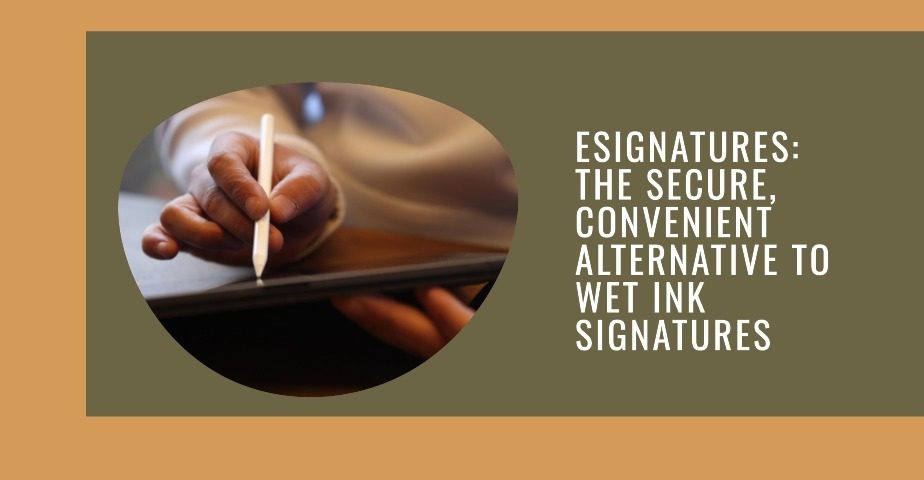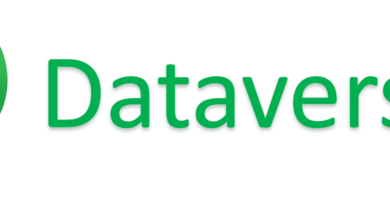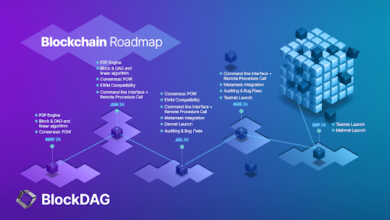eSignatures: The Secure, Convenient Alternative to Wet Ink Signatures

In today’s increasingly digital world, the old-fashioned process of using pen and paper to sign important documents can feel antiquated and inefficient. Enter electronic signatures – legally valid digital signing methods that provide a more secure and convenient option.
eSignatures enable streamlined remote transactions and paperless workflows while still meeting legal standards. As technology improves the signing experience, organizations must thoughtfully consider integrating e-signatures to keep pace in the modern business landscape.
The Case for Going Paperless
Before delving into the functionality of e-signatures, you need to learn about how to create eSignature. It’s worth examining why businesses should go paperless in the first place. What are the potential benefits?
Improved Customer Experience
Allowing transactions to be completed electronically – on any device – provides more convenience and flexibility for customers. eSignatures enable paperwork to be handled remotely, without having to physically visit an office or store.
Increased Productivity
Digitizing workflows related to document signing saves employees time otherwise spent on manual paperwork processing. eSignatures speed up turnaround times.
Enhanced Security
Leading e-signature solutions come equipped with advanced security features like data encryption, signer identity verification and access controls. This results in more secure and compliant processes.
Cost Savings
Reducing paper usage, printing, shipping, storage, and archival costs is a compelling financial incentive. eSignatures also minimize the need for in-person signing events.
Better Insights
Comprehensive audit trails give managers more visibility into signing workflows, helping identify improvements. eSignature data provides useful business analytics.
Given these potential benefits, organizations of all sizes and across all industries have compelling reasons to go paperless using electronic signatures.
What Exactly Are eSignatures?
At the most basic level, an electronic signature or eSignature refers to any electronic process that shows signer intent and approval of a document. Some common examples include:
- Uploading an image of a handwritten signature that is applied to a document
- Checking a box indicating an agreement to terms
- Signing names on an electronic signature pad
- Clicking an “Accept” or “I Agree” button
- Entering a personal PIN code or password
- Using a digital certificate for identity verification
As long as the method reliably establishes the signer’s consent, it is considered a legally valid eSignature under modern laws like the U.S. ESIGN Act and the European Union’s eIDAS regulation. The specific eSignature technology used does not determine its legality.
Core eSignature Capabilities
While the flexibility of options makes eSignatures appealing, there are some core capabilities that any enterprise-grade solution should provide:
Document Workflows
This allows setting up eSignature processes to be automatically applied to documents. Workflows map the routing, tracking, and handling of paperwork.
Audit Trails
Trusted eSignature systems log detailed records of all document events, like when a signature was created and accessed. This provides essential auditing.
Identity Verification
Advanced identity proofing of signers is crucial, like requiring government IDs or multifactor authentication. This ensures the legitimate parties are signing.
Integration Capabilities
Top solutions allow easy integration with existing business systems and databases through APIs. This avoids disruptions to current technology ecosystems.
Universal Access
Signing documents through the platform should be accessible across all devices – desktop, mobile, tablet – for maximum convenience.
Data Security
Robust security protections like encrypted storage and transmission, access controls and backup prevent data compromises.
These core eSignature features allow organizations to achieve true paperless workflows with legal validity, security, and convenience.
Selecting the Right eSignature Solution
With those essential capabilities in mind, how should businesses evaluate eSignature solutions and pick the right one for their needs? Some important criteria include:
Compliance
Any legal eSignature solution must comply fully with relevant regulations like the ESIGN Act, HIPAA, GLBA etc. Look for compliant data centers and security controls.
Scalability
The platform should flexibly support organizations from a few users to tens of thousands. Volume-based pricing plans enable affordability.
Customer Support
Responsive technical support and onboarding assistance are vital when implementing new software. Look for reliability and training.
Business Reviews
The experiences of other customers provide valuable insight. Search online for user reviews and testimonials for any solution.
Implementation Assistance
Turnkey implementation guidance, training resources, and change management help smooth the transition to eSignatures.
By thoroughly evaluating solutions against these criteria, organizations can select the right fit for their specific eSignature needs and use cases.
Implementing eSignatures Successfully
Once an eSignature solution is selected, how can companies implement the technology successfully? Here are some best practices to ensure a smooth rollout:
- Get leadership buy-in – Having clear executive sponsorship helps communicate the importance and allocates resources.
- Assign dedicated roles – Have well-defined responsibilities for implementation, training and change management.
- Create a transition plan – Start with a pilot group, then gradually expand eSignature use in phases.
- Develop policies – Document processes and guidelines for preparing, routing, and approving eSigned documents.
- Train thoroughly at launch – Get all users comfortable with the new eSignature workflows. Offer ongoing education.
- Monitor adoption metrics – Watch for bottlenecks and low usage to identify areas needing improvement.
With the right preparation and training, organizations can successfully transition signing processes to the digital world.
The Future of Signing Transactions
ESignatures are transforming business transactions in the era of remote work and digitalization. But what does the future hold for how we electronically agree to and approve important documents?
Artificial Intelligence
AI capabilities that automate document preparation, routing, and management will grow more prevalent. eSignatures will integrate with smart contracts.
Advanced Identity Proofs
Biometric signatures like fingerprints and facial recognition will provide stronger identity verification and authentication.
Blockchain Validation
Backing up eSignatures on decentralized blockchain ledgers will offer near-irrefutable proof of signing events.
Hybrid Models
While eSignatures are going mainstream, “clicks and bricks” hybrid solutions blending digital convenience with in-person signing events will persist.
Universal Adoption
As generations raised on technology enter the workforce, eSignatures will become ubiquitous across all demographics, industries, and geographies.
While wet ink likely isn’t disappearing entirely, the convenience and security of eSignatures points to a clear digital future for document signing. Organizations that strategically adopt modern solutions now will have a competitive advantage.
Final Thoughts
In closing, enterprises must keep pace with changing customer expectations and business practices by embracing electronic signatures. With many compelling benefits over slow manual signing, thoughtfully implemented eSignature solutions provide legal validity, enhanced security, and ultimate convenience for approving documents.
As technology improves the signing experience, companies owe it to their customers and employees to explore secure paperless workflows. By leveraging eSignatures, organizations can streamline critical processes to best serve clients in the digital age.





